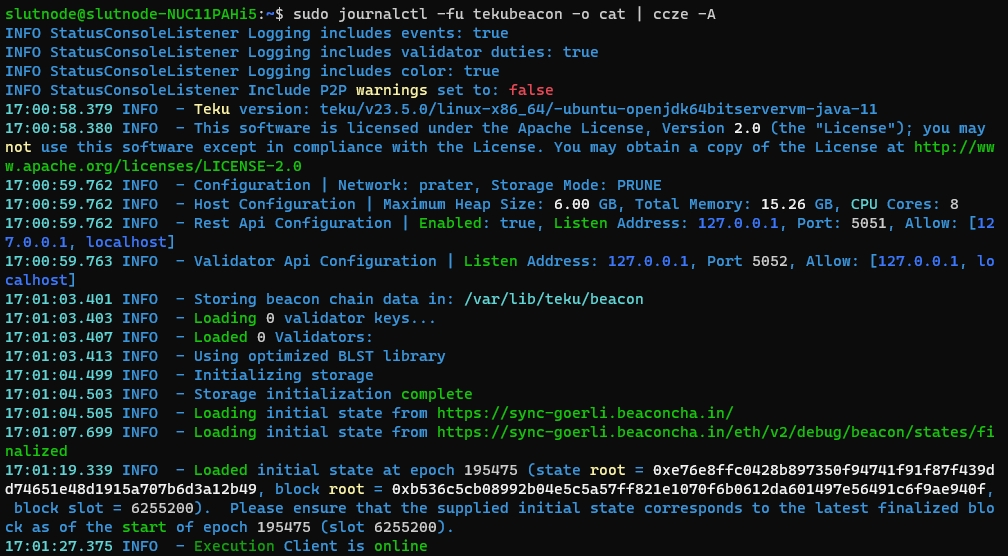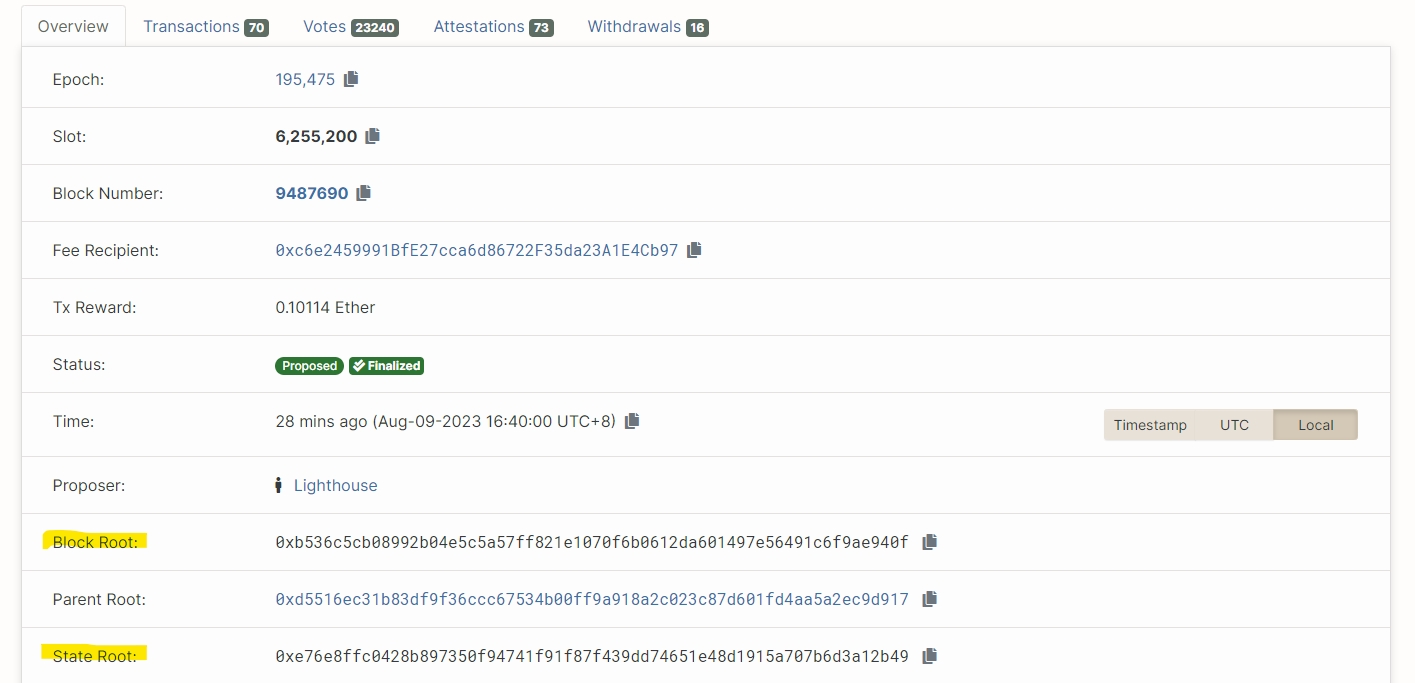Teku BN
Install the dependencies - Java Runtime Environment
sudo apt-get update
sudo add-apt-repository ppa:openjdk-r/ppa
sudo apt-get -y install openjdk-21-jre libjemalloc-devDownload Teku
Download the latest version of Teku and run the checksum verification process to ensure that the downloaded file has not been tampered with.
cd
curl -LO https://artifacts.consensys.net/public/teku/raw/names/teku.tar.gz/versions/24.10.2/teku-24.10.2.tar.gz
echo "1cc76913f3b85987e2a60c9b94c6918d31773ebd3237c5fdf33de366fa259202 teku-24.10.2.tar.gz" | sha256sum --checkExpected output: Verify output of the checksum verification.
teku-24.10.2.tar.gz: OKIf checksum is verified, extract the files and move them into the (/usr/local/bin) directory for neatness and best practice. Then, clean up the duplicated copies.
tar xvf teku-24.10.2.tar.gz
sudo cp -a teku-24.10.2 /usr/local/bin/teku
rm -r teku*Configure the Teku Consensus Client
Create an account (teku) without server access for the Teku Consensus Client & Validator Client to run as a background service. This type of user account will not have root access so it restricts potential attackers to only the Teku Consensus Client & Validator Client services in the unlikely event that they manage to infiltrate via a compromised client update.
Create a directory for Teku to store the blockchain and validator data of the Consensus layer. Move the validator_keys directory into this folder. Then set the owner of this directory to the teku so that this user can read and write to the directory.
If there are no errors, create a systemd configuration file for the Teku Consensus Client service to run in the background.
Paste the configuration parameters below into the file:
Once you're done, save with Ctrl+O and Enter, then exit with Ctrl+X. Understand and review your configuration summary below, and amend if needed.
Teku Consensus Client configuration summary:
--network: Run the Consensus Client service on the ETH Holesky testnet--data-path: Specify the directory for Teku to store data related to the consensus client--ee-endpoint: URL to connect to the execution layer client--ee-jwt-secret: File path to locate the JWT secret we generated earlier--initial-state: Enables nearly instant syncing of the Consensus Client by pointing to one of the checkpoint sync URLs here - https://eth-clients.github.io/checkpoint-sync-endpoints/--metrics-enabled: Enable monitoring of Consensus Client metrics--p2p-port:Sets the port for peer-to-peer communication. Defaults to 9000.--rest-api-enabled: Allows the validator client to connect to this consensus client. Also allows monitoring endpoints to pull metrics from this service--rest-api-interface: Sets the IP address to connect to the REST API of the consensus client that will be used by the DVT clients. Use 0.0.0.0 here and restrict to specific host IP addresses of your device using--rest-api-host-allowlist.--rest-api-host-allowlist:Sets the IP address that is allowed to connect to the REST API of the consensus client that will be used by the DVT clients. Use the internal IP address of your device here (check by runningip a) - e.g.192.168.x.x. Defaults to127.0.0.1otherwise--rest-api-port: Sets the port to connect to the consensus client--builder-endpoint: URL to connect to external builders (e.g. MEV relays)--validators-builder-registration-default-enabled: Required when using external builders to build blocks (e.g. MEV relays)--builder-bid-compare-factor: What is the multiplier (in %) of the value of externally-built blocks in order to outsource block building vs building blocks locally. Set to100to be indifferent. Default=90--p2p-nat-method=UPNP: Enables your Consensus Client to better discover and connect to other Consensus Clients in the ETH network without needing to use port forwarding
Start the Teku Consensus Client
Reload systemd to register the changes made, start the Teku Consensus Client service, and check its status to make sure its running.
Expected output: The output should say Teku Consensus Client is “active (running)”. Press CTRL-C to exit and Teku Consensus Client will continue to run. It should take just a few minutes for Teku to sync on the Mainnet.

Use the following command to check the logs of Teku Consensus Client’s syncing process. Watch out for any warnings or errors.
Expected output:

Press Ctrl+C to exit monitoring.
If the Teku Consensus Client service is running smoothly, we can now enable it to fire up automatically when rebooting the system.
Verify the Initial State roots (Checkpoint Sync)
Go to https://holesky.beaconcha.in/ on your browser and search for the slot number (
slot).Verify the
Block RootandState Root with yourjournalctloutput
testnet example: prater.beaconcha.in journalctloutput

Resources
Documentation: https://docs.teku.consensys.io/introduction
Discord: https://discord.gg/consensys (Select the Teku channel)
Last updated